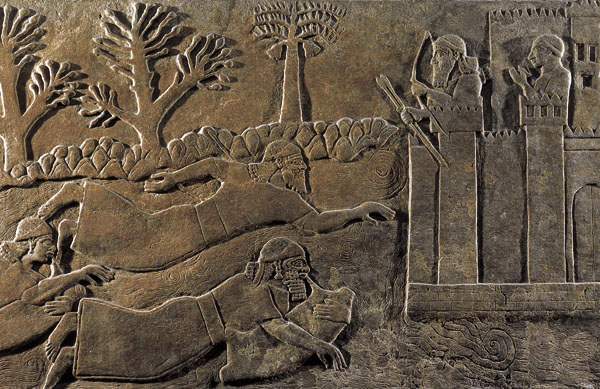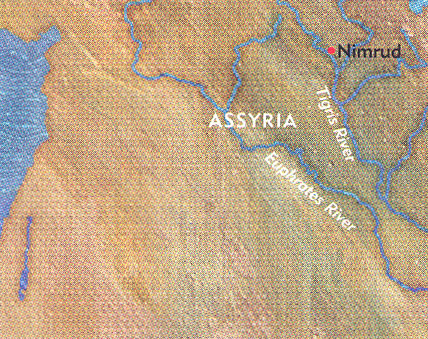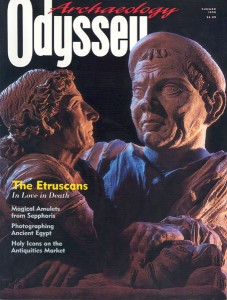

Forget the Trojan Horse.
The best way to catch your enemy unawares is to attack by water while riding a goat.
In this ninth-century B.C. relief, Assyrian soldiers assault a fortified city by floating across a river on inflated animal skins, probably those of goats. Decorating the spacious throne room of King Ashurnasirpal II’s palace at Nimrud, the relief is part of a series of tableaux depicting the king’s wartime exploits and proclaiming the power of the Assyrian Empire—one of the earliest examples of large-scale narrative art.
Boats made of reeds were common in Mesopotamia in the first millennium B.C., but they were susceptible to the perilous currents of the Tigris and Euphrates rivers. Many a vessel met its end against a river’s jagged rocks.
The Assyrians had better luck using wooden rafts supported by buoyant goatskin bladders. Ashurnasirpal used this type of raft, called a kelek, to attack the Hittite city of Carchemish, located on the Euphrates River near the border of modern Turkey and Syria. In the temple dedicated to the Assyrian war god Ninurta, adjacent to the Nimrud palace, Ashurnasirpal had his adventures recorded on massive stone slabs: “I departed from the country Bit-Adini and crossed the Euphrates at the peak of its flood by means of (rafts made buoyant with inflated) goatskin (bottle)s.” Some scholars have suggested that the relief above dramatizes Ashurnasirpal’s attack on Carchemish.
Already a library member? Log in here.
Institution user? Log in with your IP address.

